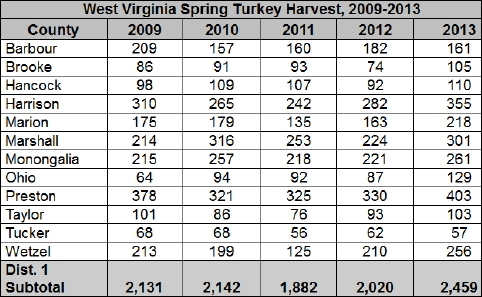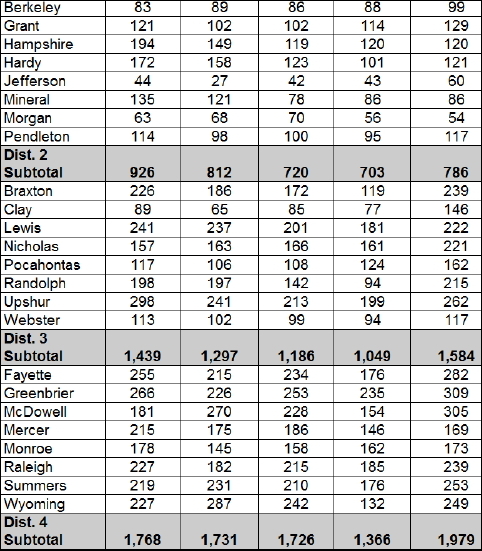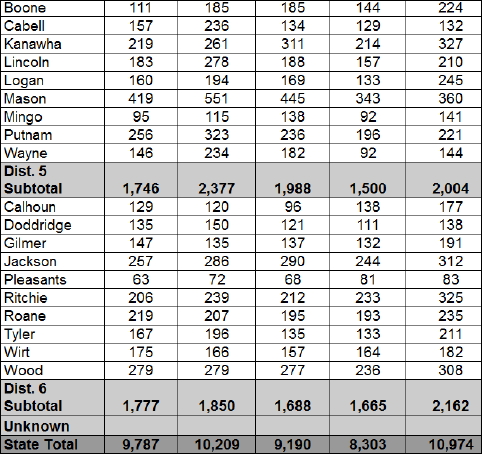|
SOUTH CHARLESTON, W.Va. - Preliminary harvest figures for the 2013 spring gobbler season indicate West Virginia hunters checked in 10,974 bearded turkeys, according to Curtis I. Taylor, chief of the Division of Natural Resources Wildlife Resources Section. This year's harvest represents a 32 percent increase over the 2012 harvest and is 13 percent above the previous five-year average.
"Our biologists expected a higher harvest because of the carry-over of birds from last year's lower harvest," said Taylor. "In addition, the weather was perfect for hunting, especially during opening week when the majority of hunters were in the woods."
The 2013 harvest was higher in all districts and 52 counties compared to 2012. While the harvest in District 2 virtually equaled the five-year average, the other districts saw significant increases above that average. Harvest in District 3 increased almost 21 percent over its five-year average and both Districts 1 and 4 saw increases of 15 percent as well. The top 10 counties were Preston with a kill of 403, Mason (360), Harrison (355), Kanawha (327), Ritchie (325), Jackson (312), Greenbrier (309), Wood (308), McDowell (305) and Marshall (301).
The 2013 harvest was the highest since 2006 and stopped a declining spring harvest trend that began in 2007. Similar to most hunted species, reproduction is correlated to harvests. Average fall mast crops which keep hens in good physical condition through the winter, followed by average springs with moderate rainfall, ensure good poult survival, which increases the population for future harvests.
"Because a significant portion of the harvest is composed of two-year-old birds, one factor that added to this year's harvest was the successful poult production in 2011," Taylor said. "We are hopeful that this spring will continue to provide moderate-to-average rainfall and we will have above-average reproduction, rebuilding the turkey population to levels we experienced a decade ago."


 |



